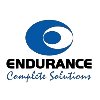Filter interviews by
Motherson Molds And Diecasting Production DET Interview Questions and Answers
Motherson Molds And Diecasting Production DET Interview Experiences
1 interview found

(3 Questions)
- Q1. What is tool offsat & vmc machine means
- Ans.
Tool offset is the difference between the actual tool position and the programmed tool position, while VMC machine stands for Vertical Machining Center.
Tool offset is used to compensate for variations in tool length or diameter
VMC machines are used for milling, drilling, tapping, and other machining operations
Tool offset is crucial for achieving accurate and precise machining results
VMC machines are commonly used in ma...
- Q2. Tool name & cnc machine control type
- Q3. Vmc mahine control mode name mpg related query
Top trending discussions






Interview questions from similar companies

(3 Questions)
- Q1. Tell Somthing about yourself
- Ans.
Experienced production supervisor with a strong background in managing teams and optimizing processes.
Over 5 years of experience in supervising production lines
Skilled in implementing lean manufacturing principles to improve efficiency
Proven track record of meeting production targets and deadlines
Excellent communication and leadership skills
Certified in Six Sigma for process improvement
- Q2. What is tolerance
- Ans.
Tolerance refers to the acceptable range of variation in a process or product without affecting its quality.
Tolerance is the maximum allowable deviation from a specified dimension or value.
It ensures that products meet quality standards even with minor variations.
For example, in manufacturing, a part may have a tolerance of +/- 0.1mm for its dimensions.
Tolerance can also refer to the ability to withstand or endure some
- Q3. Are you able to work,Where temp is high
- Ans.
Yes, I am able to work in high temperatures.
I have experience working in environments with high temperatures.
I am physically fit and able to handle the heat.
I am aware of the necessary precautions to take in high temperature conditions.
I am comfortable wearing appropriate protective gear in hot conditions.
Interview Preparation Tips

An aptitude test is designed to assess an individual's ability to perform certain tasks or react to a range of different situations. These tests are often used by educational institutions and employers to evaluate potential candidates' skills, talents, and potential for success in a specific role or academic program. Here are some key details about aptitude tests:
1. **Purpose**: Aptitude tests are used to measure a variety of skills, including logical reasoning, verbal ability, numerical skills, and spatial awareness. They help to identify strengths and weaknesses and predict future performance.
2. **Types**:
- **Verbal Reasoning**: Assesses understanding and reasoning using concepts framed in words.
- **Numerical Reasoning**: Tests ability to work with numbers, including basic arithmetic, data interpretation, and logical problem-solving.
- **Abstract Reasoning**: Evaluates the ability to identify patterns, logical rules, and trends in new data.
- **Mechanical Reasoning**: Measures understanding of mechanical and physical principles.
- **Spatial Reasoning**: Assesses the ability to visualize and manipulate objects.
3. **Format**: Aptitude tests can be multiple-choice, true/false, or involve practical problem-solving tasks. They are often timed, with specific sections dedicated to each type of reasoning.
4. **Preparation**:
- **Practice Tests**: Taking practice tests helps familiarize with the format and types of questions.
- **Study Guides**: Reviewing basic concepts in mathematics, grammar, and logical reasoning.
- **Skills Development**: Enhancing skills through puzzles, reading, and other related activities.
5. **Usage**:
- **Recruitment**: Employers use aptitude tests to screen job applicants and find the best fit for a role.
- **Education**: Schools and colleges use these tests for admissions, placement, and identifying areas for student improvement.
- **Career Counseling**: Helps individuals understand their strengths and areas for improvement, guiding career choices.
6. **Scoring**: Scores are typically presented as percentiles, showing how a test-taker compares to a norm group. Higher scores indicate better performance relative to the norm group.
If you have specific questions about a certain type of aptitude test or need preparation tips, feel free to ask!
(2 Questions)
- Q1. Tell me about yourself.Tip: Provide a brief overview of your professional background, focusing on experiences relevant to the job you're applying for. Highlight your key achievements and skills.
- Q2. Know YourselfAssess and interest.
Interview Preparation Tips

I applied via Naukri.com and was interviewed in Jul 2024. There were 3 interview rounds.
(2 Questions)
- Q1. Last company name and designation
- Ans.
ABC Company, Senior Production Supervisor
Managed a team of 20 production workers
Implemented new production processes to increase efficiency
Responsible for meeting production targets and deadlines
- Q2. Salary package and other allowance
(2 Questions)
- Q1. Do you know about press forging
- Ans.
Press forging is a metalworking process where a metal workpiece is shaped by applying compressive force using a press.
Press forging involves shaping metal by applying compressive force using a press machine.
It is commonly used in the automotive industry to manufacture components like gears, crankshafts, and connecting rods.
Press forging can produce parts with high strength and precision.
The process can be hot forging (...
- Q2. What about minimum flash thickness if part forge on 1600 ton press forging
- Ans.
Minimum flash thickness is determined by material properties, part geometry, and press forging parameters.
Minimum flash thickness is typically calculated based on material flow behavior during forging process.
Material properties such as flow stress, strain rate sensitivity, and temperature play a key role in determining minimum flash thickness.
Part geometry, including complexity and draft angles, can also influence the...
(2 Questions)
- Q1. About salary slips and experience latter
- Q2. Notice period in month or days

Production Engineer Interview Questions & Answers
Seoyon E-hwa Automotiveposted on 26 Oct 2024
I applied via Approached by Company and was interviewed in Sep 2024. There was 1 interview round.
(1 Question)
- Q1. Machine related questions Ans Injections moulding horizontal type machine handle

(2 Questions)
- Q1. About experience
- Q2. About product development
(2 Questions)
- Q1. Product specification
- Q2. Product development
Interview Preparation Tips

Production Supervisor Interview Questions & Answers
Maxxis Rubberposted on 19 Oct 2023

(3 Questions)
- Q1. What is the 7QC ?
- Ans.
7QC stands for Seven Quality Control Tools, which are a set of techniques used for quality improvement in production processes.
The 7QC include tools such as Pareto charts, cause-and-effect diagrams, scatter diagrams, control charts, histograms, check sheets, and flowcharts.
These tools help identify and solve quality-related issues in production processes.
For example, a Pareto chart can help prioritize the most signific...
- Q2. What is the TPM?
- Ans.
TPM stands for Total Productive Maintenance, a proactive approach to maintenance that aims to maximize equipment effectiveness.
TPM involves empowering operators to take ownership of equipment maintenance
Focuses on preventing breakdowns and improving overall equipment efficiency
Incorporates principles such as autonomous maintenance, planned maintenance, and continuous improvement
Example: Implementing daily equipment che...
- Q3. What is the TPM target?
- Ans.
TPM target stands for Total Productive Maintenance target, which is a goal set to maximize the efficiency and effectiveness of production equipment.
TPM target is a goal set to minimize equipment downtime and maximize productivity.
It involves proactive maintenance practices to prevent breakdowns and improve overall equipment effectiveness.
Examples of TPM targets include reducing unplanned downtime by 20% or increasing e...

Production Interview Questions & Answers
Interface Microsystemsposted on 27 Oct 2023
I applied via Campus Placement and was interviewed in Apr 2023. There were 4 interview rounds.

(2 Questions)
- Q1. What is diaode . And uses
- Ans.
A diode is a semiconductor device that allows current to flow in one direction only.
Diodes are commonly used in rectifiers to convert AC to DC power.
They are also used in signal processing, voltage regulation, and protection circuits.
Examples include light-emitting diodes (LEDs) and photodiodes.
Diodes can be used in logic gates and digital circuits for switching and signal processing.
- Q2. What is ldr and use
- Ans.
LDR stands for Light Dependent Resistor. It is a type of resistor that changes its resistance based on the amount of light it is exposed to.
LDRs are commonly used in light sensing applications, such as automatic street lights or camera exposure control.
The resistance of an LDR decreases as the intensity of light increases.
LDRs are often used in combination with other components like transistors or microcontrollers to c
(2 Questions)
- Q1. About yourself and your city
- Q2. Your choice and shift
(1 Question)
- Q1. Draw a diagram of half wave rectifier
- Ans.
A half wave rectifier is a circuit that converts AC voltage to pulsating DC voltage by allowing only one half of the input waveform to pass through.
The input AC voltage is applied to a diode which only allows current to flow in one direction.
During the positive half cycle of the input waveform, the diode conducts and allows current to flow through the load.
During the negative half cycle, the diode blocks current flow, ...
Interview Preparation Tips

I applied via Walk-in and was interviewed before Feb 2022. There was 1 interview round.
(7 Questions)
- Q1. What is relay and it's function working
- Ans.
A relay is an electrically operated switch that uses an electromagnet to mechanically control the switching action.
Relays are used to control high power circuits with low power signals.
They can be used to control motors, lights, and other electrical devices.
Relays have an input coil that generates a magnetic field when current flows through it.
This magnetic field attracts a movable armature, which closes or opens the s...
- Q2. Why we are using switches and not relay in some of domestic applications
- Ans.
Switches are used instead of relays in some domestic applications due to their smaller size, lower cost, and faster response time.
Switches are smaller in size compared to relays, making them more suitable for compact domestic appliances.
Switches are generally less expensive than relays, making them a cost-effective choice for domestic applications.
Switches have a faster response time compared to relays, allowing for qu...
- Q3. What do you know about relay
- Ans.
A relay is an electrically operated switch that uses an electromagnet to mechanically control the switching action.
Relays are commonly used in electrical systems to control high-power devices with low-power signals.
They consist of a coil, an armature, and a set of contacts.
When the coil is energized, the armature moves and closes or opens the contacts, allowing or interrupting the flow of current.
Relays are used in var...
- Q4. Do you know the manufacturing procedure of relays
- Ans.
Yes, I know the manufacturing procedure of relays.
Relays are electromechanical devices used to control the flow of electricity in a circuit.
The manufacturing procedure involves several steps such as designing, prototyping, testing, and mass production.
Designing includes selecting the appropriate materials, determining the specifications, and creating the circuit diagram.
Prototyping involves creating a working model to ...
- Q5. Do heard about epoxy and its use for relay
- Ans.
Yes, epoxy is commonly used in relays for its insulating and adhesive properties.
Epoxy is a type of resin that can be used as an adhesive or coating.
In relays, epoxy is often used to encapsulate and protect the internal components.
It provides insulation and helps to prevent moisture or dust from entering the relay.
Epoxy can also improve the mechanical strength and stability of the relay.
For example, epoxy is used in au...
- Q6. Which material use for relay contact soldering
- Ans.
The material used for relay contact soldering is typically silver or silver alloy.
Silver or silver alloy is commonly used for relay contact soldering due to its high electrical conductivity and low resistance.
Silver solder has a lower melting point compared to other solder materials, making it suitable for delicate electronic components.
The use of silver or silver alloy solder helps ensure reliable and efficient electr...
- Q7. Tell 5 real time applications of relayss
- Ans.
Relays are used in various real-time applications for controlling electrical circuits.
Industrial automation: Relays are used to control motors, pumps, and other industrial equipment.
Power distribution: Relays are used in power grids to control the flow of electricity and protect against overloads.
Automotive industry: Relays are used in vehicles for controlling headlights, wipers, and other electrical systems.
Telecommun...
Interview Preparation Tips
- Relays
- Instrument Calibration
- Pick up and drop out

Production Manager Interview Questions & Answers
Ceat Specialty Tyresposted on 21 Feb 2023
I applied via Referral and was interviewed before Feb 2022. There were 2 interview rounds.

(2 Questions)
- Q1. Why u want to leave u r present company
- Q2. Why u want to join ceat
Interview Preparation Tips
- Languages
Motherson Molds And Diecasting Interview FAQs
Tell us how to improve this page.
Interview Questions for Popular Designations
- Production Engineer Interview Questions
- Production Supervisor Interview Questions
- Production Manager Interview Questions
- Production Officer Interview Questions
- Executive Production Interview Questions
- Production Interview Questions
- Senior Production Engineer Interview Questions
- Production Graduate Engineer Trainee Interview Questions
- Show more
Interview Questions from Similar Companies
|
Design Engineer
29
salaries
| ₹2 L/yr - ₹4.2 L/yr |
|
Engineer
25
salaries
| ₹2.2 L/yr - ₹4 L/yr |
|
Tool Room Engineer
22
salaries
| ₹2 L/yr - ₹4.5 L/yr |
|
Tool Engineer
17
salaries
| ₹1.2 L/yr - ₹4.3 L/yr |
|
Assistant Engineer
11
salaries
| ₹2.2 L/yr - ₹3.1 L/yr |

Sundaram Clayton

Rane (Madras)

Precision Camshafts

Endurance Technologies
Calculate your in-hand salary
- Home >
- Interviews >
- Motherson Molds And Diecasting Interview Questions >
- Motherson Molds And Diecasting Production DET Interview Questions





